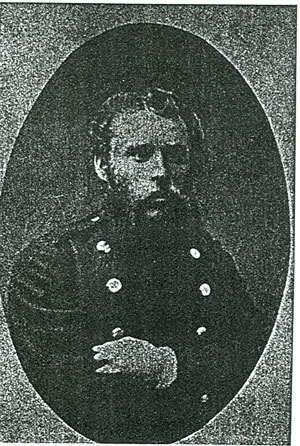Peder Rasmussen Holtze
Brief Overview
Peder Rasmussen Holtze.
Share this Resource
Resource Categories
In Service to Country - New and OldPeder Rasmussen Holtze was a native of Krønge, on the island of Lolland, in Maribo County. Following his confirmation he was apprenticed to become a clog-maker. He served in the Danish army in the years following Denmark’s defeat by Germany, as did 3 brothers of his future wife, Hanna Hansen Hvid. In 1888 Peder and his family followed Hanna’s brothers to Nebraska, where they settled in Seward County. In 1892 Peder and Hanna moved to Adams County, where they resided until their deaths.
In the 19th century Denmark and Germany fought two wars over the duchies of Slesvig and Holsten (Schleswig-Holstein in German), which belonged to the Danish crown, but were not part of Denmark. Many special laws were in effect in the duchies, which had a mixed population of Danish-, German- and Frisian-speaking people. The Danish government wished to incorporate the heavily Danish Slesvig into Denmark proper, but was hindered by stipulations that the two duchies would not be separated. The first war, which lasted from 1848-50, was won by Denmark. By 1864 tensions between the two countries had once again escalated. With the backing of Austria, Prussia – now on the verge of becoming a confederated German ‘empire’ – attacked Denmark. The decisive battle was fought at Dybbøl Mill, where the Danes were defeated. Denmark thus had to cede the duchies to its southern neighbor, resulting in families being split and allegiances torn. In the following decades, as German governance of Slesvig strengthened, tens of thousands of individuals left for America, Canada, and elsewhere. Only after the end of WWI was a plebiscite held to determine Slesvig’s fate. As a result of the popular vote northern Slesvig was returned to Denmark, and the border between the two countries was fixed where it is today.
